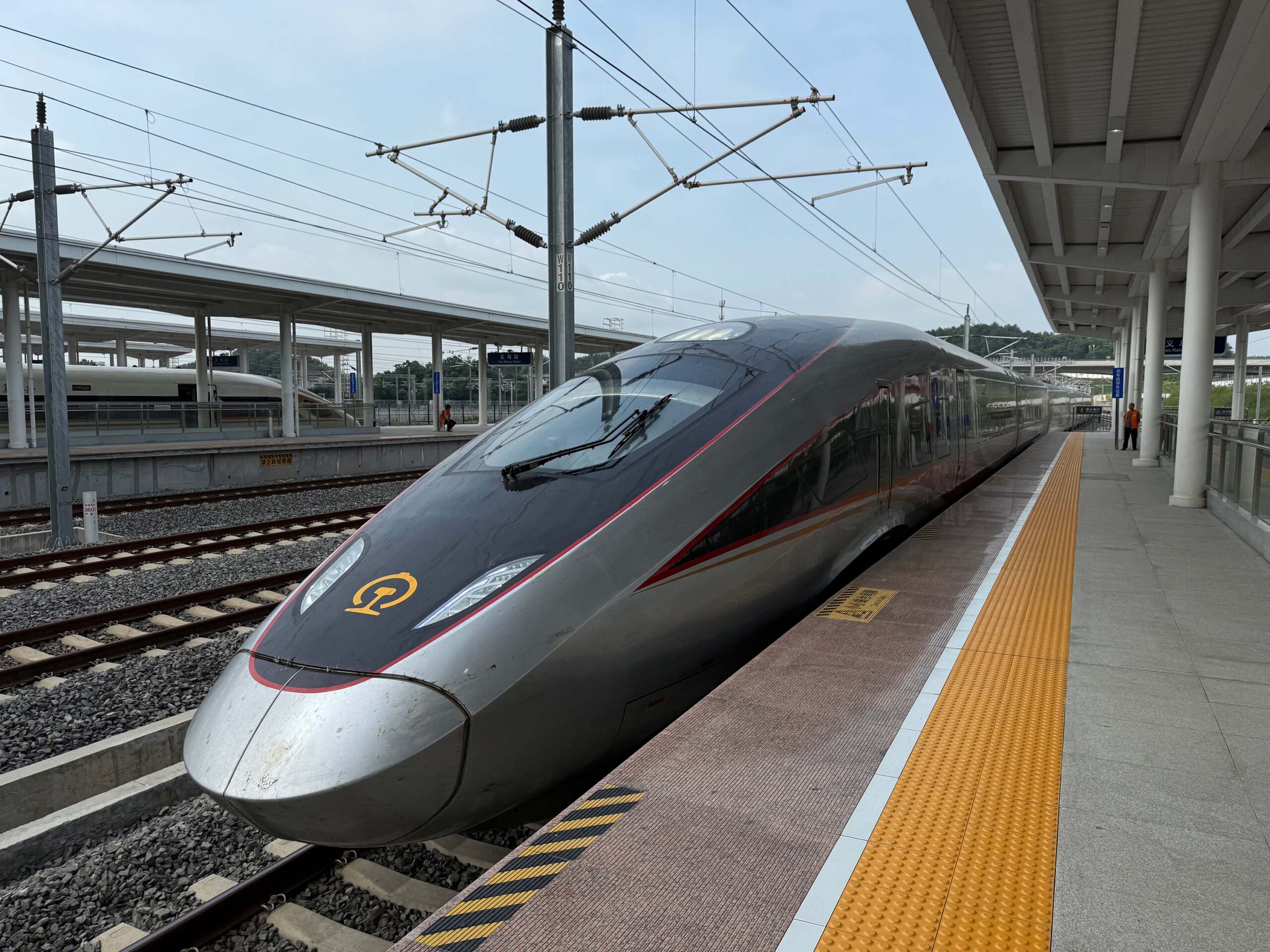Although Japan has long been known for its exceptional high-speed rail system (Shinkansen), China has been playing a lot of catch-up lately. In fact, ‘catch up’ might be an understatement considering how the country now operates more high-speed railways than every other country combined. Having heard nothing but good things about the system, I was excited to finally check it out on my trip to China.
Booking China Railway tickets
There are generally three methods to book China Railway tickets. First and most straightforward, you can buy train tickets at the station the day of and up to two weeks in advance of your trip. Most station sales agents speak English somewhat, which is certainly helpful. However, this might be a hassle depending on where you are based. A second option is booking through the China Railway website, which can be a real hassle if you don’t speak or read Chinese. Although they have an English site, it isn’t easy to navigate and is very clunky.

Finally, there is Trip.com, which is the international version of China’s Ctrip online travel agency. This is how I generally book my train tickets, as I find them to be most convenient. Despite that, Trip.com does add a significant booking surcharge to the train tickets, which varies anywhere between 10% to 25% of the fare. Be aware, however, that if you’re travelling with people, Trip.com is notoriously unreliable for seat assignment requests. During busier seasons or on trains with limited seats, you might be seated separately or even in different coaches.
Note that you’ll have to provide your passport details when booking. Your passport will act as your ticket, as China Railways has all but abolished the use of paper tickets.
Security Check and Boarding
When you arrive at the train station, you’ll find yourself at an ID and security checkpoint. Without a Chinese National ID, it is easiest to clear this checkpoint by walking over to the manned check counters instead of using the automated checkpoints; for one, not all automated checkpoints are equipped with machines that can also read passports. You’ll be let into a security checkpoint afterwards, which is similar, if not less scrutinising than those in an airport. Although there are no limits on most liquids, the carriage of alcohol and other flammable liquids is restricted on the high-speed rail.


Further identification checks will be conducted at the boarding time, typically 10 minutes before your train’s departure time. This is done in the same fashion, requiring you to scan your passports in an ID reader. Again, head to the manual check counter, as not all stations have passport-reading automated checkpoints. I’ll also add that in some stations, like Shanghai South, Business Class passengers can undergo this boarding process directly from the Business Class Lounge.
Business Class
Contrary to the class hierarchy in aviation, Business Class is the most premium offering on the China Railway High Speed. As such, they are typically priced anywhere between two and a half to four times the price of a standard Second Class ticket. In certain stations, Business Class tickets also grant you access to a Business Class lounge, and sometimes a Business Class exclusive entrance and security check.

As its name suggests, Business Class features a spacious seat that converts into a fully flat bed. On most trains, this is composed of a pod seat arranged in a 1-2 configuration, usually located on each end of the train; these seats, in particular, look very similar to the B/E Aerospace Minipods you’d still find on many airlines. On newer Fuxing trains, however, they are set in a private suite in a 1-1 configuration, complete with sliding doors.

Being inspired by its airline counterpart, the seat features many of the same functions and amenities. This includes various items, like reading lamps, power outlets, a tray table, as well as spacious storage areas. Newer trains also feature an in-seat entertainment screen, which seems like a novelty on a rail journey!




Of those functions, nothing perhaps trumps the flatbed function; this is extremely impressive for any train journey to begin with, let alone a high-speed one. As a bed, the padded leather seat was reasonably comfortable if not a bit too firm. I mean, it is China after all, where firm beds are the norm. Furthermore, the pillow was nice enough, although the blanket seemed like overkill, considering the ambient temperature in the summer.


Business Class amenities
Additionally, Business Class passengers are also offered several soft amenities in addition to the spacious seat. This most prominently includes a pair of slippers, a pillow, and a laundered blanket that is offered upon boarding. Furthermore, a selection of Chinese-language literature is also available in the seat pocket, as well.



Finally, I’ll add that refreshments are also provided, with snackboxes and beverages typically offered for free on shorter journeys. Your mileage may vary, but most train attendants do not speak English. As such, I’d suggest having a translation app open or learning a few words in Chinese; otherwise, you’ll end up getting hot green tea on a sweltering summer’s day instead of a cool bottle of water, as I did…

The snack boxes would contain various dry items like saltine crackers and mixed nuts, as well as several local choices like Chinese-style jerky and candied dried fruits. While nuts and crackers are ordinary enough, trying spicy candied fruits was certainly not an experience I’d like to repeat anytime soon!

First Class
Not counting the elusive Premium First Class service available only on select trains, First Class is the second-highest offering on most China Railway trains. This is very similar to the Green Car service available on the Shinkansen, featuring a more exclusive coach with seating in a 2-2 arrangement. Compared to Business Class, First Class fares are a lot more competitive, with about a 30% premium over Second Class.


In particular, First Class offers wider seats and more legroom compared to Second Class, although the seat pitch still pales compared to any class of service on the Shinkansen. Specifically, there’s just about the same amount of legroom as a typical regional Business Class or US domestic First Class flight; this is enough for it to be comfortable but not enough to actually place bigger luggage in front of you.



Regardless, the seats themselves are quite comfortable if not merely ordinary. Tray tables, footrests, and a power outlet are ergonomically built into the seat and are simple enough to use. There are also storage hooks and coat hooks in front and next to the window, in addition to the in-seat literature pocket. Finally, I’ll also add that First Class does not come with any soft amenities like slippers, pillows, blankets, refreshments, or lounge access.
Verdict
This being my first ever trip to China, I was impressed by the quality and reliability of the China Railway High Speed service. Business Class, in particular, is an incredible offering on a train, despite being completely unnecessary for the shorter intercity journeys I took. First Class, I felt, was the sweet spot between Business Class and Second Class, featuring quieter coaches and just enough comfort. Having said that, although I loved the experience, I sure do wish that the booking process can be improved. Particularly, I wish we could at least view seat maps or make our own seat assignments in advance.
I hope this mini-guide and review can help you navigate the China High Speed Rail on your trips in the future!


Leave a Reply